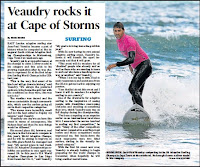nearly nine million tons (8.1 million t) of plastic enter the ocean each year.That's the equivalent of unloading a dump truck of plastic into the ocean every minute help keep habitats healthy for humans and animals by participating in this year kids vs. plastic Almanac challenge.plastic water bottles straws and bag might be part of your everyday life. They're called single use plastics because you use them once then throw them away. but that plastic doesn't disappear when you're done with it most of it ends up in the ocean where it can entangle animals or maker them sick. National geographic explorer are working hard to raise awareness and solve this plastics problem check out what one explorer is doing to reduce single use plastic is doing single use plastic in here own family and around the world. meet national geographic explorer and plastic waster activist Jenna Jambeck an award winning explore and environmental engineer Janne Jambeck is working hard to reduce the amount of plastic piling up in the ocean and on land. Here jambeck shares how she got her start in this field of science and how you can get involved too. what inspired you to care about the amount fo plastics in the environment I grew up in town of less than 3,000 people in Minnesota u.s.a. where there was no trash collection. we had to take our trash to the landfill ourselves so I saw what everyone threw away and became fascinated with it. plus I've always loved the ocean. when i first heard about our waste ending up in the ocean i knew we doing sometime wrong on land than became dedicated to protecting the seas. what are you working on now as a co leader for the sea to source plastic expeditions for national geographic we are trying to better understand how waste movie from land into our waterways especially rivers that can lead into the ocean Having grown up on a river this is especially important to me I'm also looking at how natural disasters contribute to the plastic pollution problem. why is this issue so impotent The statistics are pretty scary the amount of plastic produced around the world over the past 60 years is equivalent to the weight of 80 blue whales. A lot of that because waste but only 9 percent of in our environment of waste is recycled. The rest end up in landfills or in our environment it litters our ocean and our shores and animals ingest and get entangled in the plastic. so how can kids help to reduce the amount of plastic they use at home to start pay attention to the plastic items you use are they all useful can you imagine ra different way to get the some or simple food or drink without the packaging can you reuse it. Any other ways kids can get involved There are many ways to make a collective difference start start clubs and groups with friends to communicate your massage about plastic do research to empower yourself about topic then communicate it to others you can also tap into Marine Debris tracker (marindebris engr edu) which is a great tool for collecting data on what leaking out into environment you can create map of what you find in your neighborhood doesn't have to be anywhere near water or to ocean and in your area It an easy way to make a big difference. from called national geographic kids almanac.





















No comments:
Post a Comment